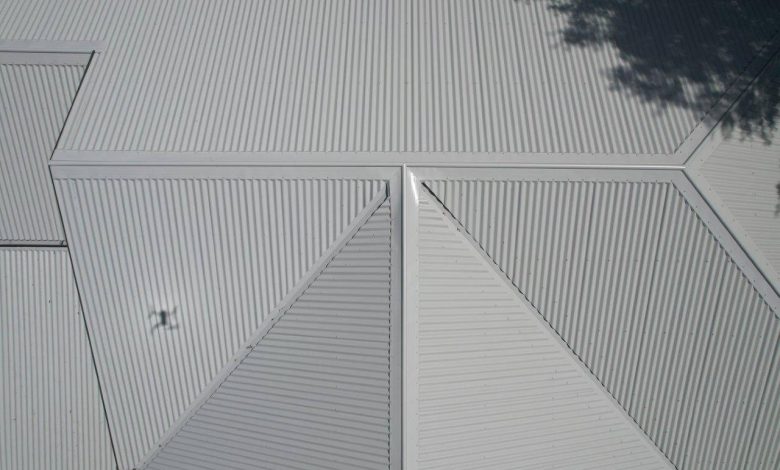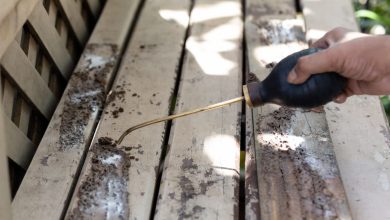Noisy Whirlybird: Causes and Roof Repairs Solutions

Every homeowner loves a comfortable and serene home. However, if you have a ‘whirlybird’ or turbine vent on your roof, there might be instances where you’re faced with an unexpected disturbance: noise. A noisy whirlybird can turn the calm of your living space into a distraction, but the good news is that it can be fixed. In this blog, we will delve into the common causes of a noisy whirlybird and the roof repairs solutions to rectify the problem.
Why Is My Whirlybird Noisy?
Weather Elements:
Whirlybirds are designed to spin and expel hot air from the attic. On particularly windy days, they can become exceptionally noisy due to the rapid spinning induced by the wind. Additionally, debris like leaves, twigs, or even hail can cause noises when they get caught up in the whirlybird.
Wear and Tear:
Over time, the moving parts of a whirlybird can wear out, leading to increased friction and, consequently, noise. If not regularly maintained, rust or corrosion can develop, adding to the cacophony.
Improper Installation:
If the whirlybird is not installed correctly, it can lead to wobbling or off-center spinning, both of which can create noise. This not only results in a noisy home but also reduces the effectiveness of the vent.
Roof Repairs Solutions for a Noisy Whirlybird:
Regular Maintenance:
Lubrication: A simple and effective way to reduce noise is by lubricating the moving parts of the whirlybird. This decreases friction and ensures smooth rotation. Using a silicone-based lubricant can be particularly effective.
Cleaning: Ensuring your whirlybird is free from debris can reduce unnecessary noises. A regular check, especially after storms, can help maintain the whirlybird’s functionality.
Tightening Loose Parts:
If you notice a wobbling whirlybird, it’s essential to inspect it for any loose components. Bolts or screws might have loosened over time. Tightening them can stabilize the vent and reduce the noise.
Professional Roof Repairs:
Sometimes, the problem might be beyond a simple DIY fix. In such cases, seeking professional roof repairs is the best option. Expert roofers can:
Inspect and Identify the Issue: Professionals can quickly identify whether the noise is due to wear and tear, structural issues, or any other underlying problems.
Replacement: If your whirlybird is too old or damaged, it may be more cost-effective and efficient to replace it altogether. A new unit will likely be quieter and more effective.
Proper Installation: If the root of the problem is improper installation, expert roofers can reinstall the whirlybird correctly, ensuring it functions quietly and efficiently.
Consider an Upgrade:
With advancements in technology, modern whirlybirds are designed to be quieter and more efficient. If you live in a particularly windy area or if your current model is outdated, it might be worth considering an upgrade to a newer, quieter model.
A noisy whirlybird can be a source of disturbance, but it doesn’t have to be a permanent problem. With regular maintenance, periodic checks, and professional roof repairs when needed, you can ensure a peaceful and comfortable living environment. Always remember, when in doubt, consulting with a professional can provide tailored solutions and peace of mind. Don’t let the spinning noises from above rain down on your tranquility; address the noisy whirlybird and enjoy the silent comfort of your home.
Whirlybirds, or turbine vents, play a crucial role in keeping our attics well-ventilated, ensuring our homes remain comfortable regardless of the weather. However, when these devices become noisy, they can quickly turn from a home’s asset into an annoyance. If you’re faced with a noisy whirlybird, understanding its causes and knowing the repair solutions can save you from many sleepless nights.
1. Understanding the Whirlybird
Before diving into the causes and solutions, it’s essential to understand how a whirlybird functions. These vents rely on the wind’s power to suck out the hot air from the attic. As the wind turns the turbine, the warm air is drawn upwards and out, ensuring that your home stays cool.
2. Common Causes of Noisy Whirlybirds
There are several reasons why a whirlybird might start producing unwanted noise:
2.1. Wear and Tear
Over time, the moving parts within the whirlybird can wear out, leading to metallic screeching sounds when the turbine moves.
2.2. Loose Parts
Screws and other components can become loose after a while, causing the turbine to rattle or produce thudding sounds.
2.3. Damaged Blades
The blades of the turbine can get bent or damaged due to external factors like debris or harsh weather. This misalignment often results in uneven movement and noise.
2.4. Poor Installation
If the whirlybird isn’t installed correctly, it might not rotate smoothly, leading to friction and noise.
3. Roof Repair Solutions for a Noisy Whirlybird
Luckily, most whirlybird-related noises can be fixed without resorting to a complete replacement. Here are some solutions:
3.1. Tightening Loose Components
A simple inspection can help you identify any loose screws or parts. Tightening these components can often resolve the noise issue.
3.2. Lubricating Moving Parts
A little lubrication can go a long way in ensuring the smooth operation of your whirlybird. Use a high-quality lubricant and apply it to the turbine’s moving parts. This can reduce friction and, in turn, minimize noise.
3.3. Realigning or Replacing Blades
If you notice bent or damaged blades, try to realign them. If the damage is too extensive, consider replacing them. New blades can offer smoother operation and reduce noise.
3.4. Inspect for Proper Installation
If you suspect that your whirlybird was not installed correctly, it might be worth consulting with a roofing expert. They can assess the installation and make the necessary adjustments.
3.5. Install a Vibration Damper
If all else fails, consider adding a vibration damper. This tool can help absorb some of the vibrations and reduce the noise generated by the turbine.
4. Prevention is Key
To ensure your whirlybird remains noise-free, it’s essential to adopt some preventive measures:
Regular Maintenance: Periodically inspect your whirlybird for signs of wear and tear. Address any issues before they escalate.
Protect Against External Damage: Ensure that surrounding trees are trimmed, reducing the risk of branches or debris damaging the vent.
Choose Quality: When purchasing a new whirlybird, opt for a quality product. High-grade materials and craftsmanship can enhance durability and minimize noise issues.
A noisy whirlybird doesn’t necessarily mean you need to bear with the disturbance or invest in a complete replacement.
Understanding the potential causes and implementing the right repair solutions can help restore peace and quiet to your home.
Regular maintenance and preventive measures can further ensure that your turbine vent remains an asset rather than an annoyance.


